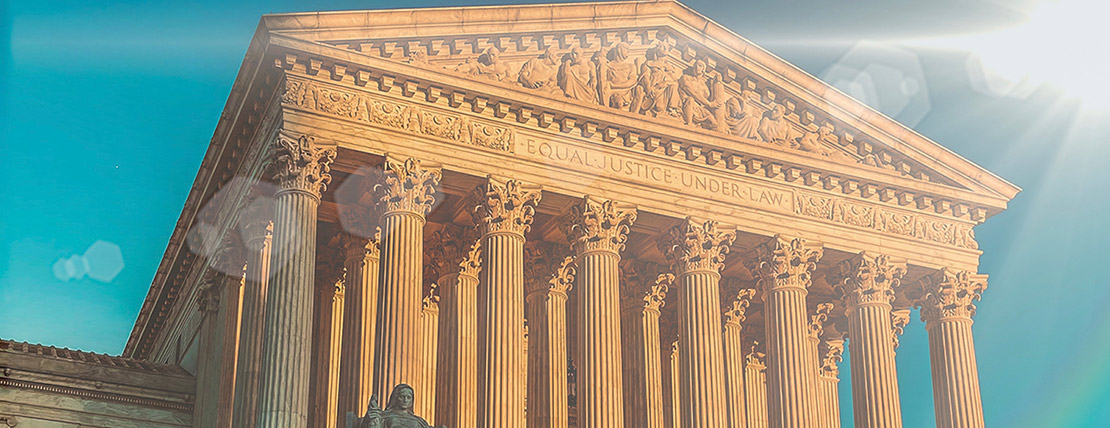- Chevron doctrine is overturned. On June 28, the U.S. Supreme Court overturned the Chevron doctrine, meaning federal courts will no longer have to defer to agency regulations for interpretation of ambiguous statutes.
- How will the decision affect employers? Agencies like the Department of Labor, the National Labor Relations Board, the Equal Employment Opportunity Commission and the Occupational Health and Safety Administration will face new constraints.
- What’s next? Experts say employers need to keep in mind state laws and regulations, some of which align closely with federal rules and federal agency interpretations.
By a 6-3 vote, the U.S. Supreme Court overturned the Chevron doctrine on June 28 in the case rulings of Loper Bright Enterprises v. Raimondo and Relentless v. Department of Commerce.
The decision overrules the 1984 decision in Chevron v. Natural Resources Defense Council, known as the Chevron doctrine. Under that doctrine, if Congress has not directly addressed the question at the center of a dispute, a court was required to uphold the agency’s interpretation of the statute as long as it was reasonable.
Chief Justice John Roberts, writing for the court, said federal judges “must exercise their independent judgment in deciding whether an agency has acted within its statutory authority.”
According to labor and employment law firm Littler Mendelson P.C., agencies like the Department of Labor (DOL), the National Labor Relations Board (NLRB), the Equal Employment Opportunity Commission (EEOC) and the Occupational Health and Safety Administration (OSHA) will face new constraints on their discretion.
Agencies like the DOL, NLRB, EEOC and OSHA will face new constraints on their discretion.
“These agencies will now face a new landscape in federal court. If the agencies are challenged by private people or companies about the meaning of a statute, they can no longer expect to start the case with a leg up,” Littler attorneys wrote in their analysis.
How Will This Decision Affect Employers?
The Loper Bright decision will have an immediate impact on pending legal challenges to an array of federal agency rules that regulate the workplace, said Stephanie L. Adler-Paindiris, a principal at labor and employment law firm Jackson Lewis P.C. Some of them include the Pregnant Workers Fairness Act, a DOL rule increasing the minimum salary level for “white collar” exemptions from overtime and a rule defining “independent contractor” status under the Fair Labor Standards Act (FLSA).
“In fact, industry groups suing the DOL over its minimum salary and independent contractor rules immediately directed courts to the Loper Bright decision in support of their challenge,” Adler-Paindiris said. “Also, employers that are currently facing litigation arising from alleged violations of agency rules will have a stronger chance of defending their claims in court.”
On the other hand, employers regularly rely on agency regulations and informal guidance to ensure compliance with federal law and to conform to workplace best practices, Adler-Paindiris noted.
“We will see greater uncertainty in the agencies and the courts as these regulations come under greater challenge, which, at least in the short term, can add to the complexity of legal compliance,” she said.
“We will see greater uncertainty in the agencies and the courts as these regulations come under greater challenge, which, at least in the short term, can add to the complexity of legal compliance.”
— Stephanie L. Adler-Paindiris, principal, Jackson Lewis P.C.
What Should Employers Watch for Now?
Alexander MacDonald, a shareholder at the Littler Mendelson P.C. Workplace Policy Institute, reminded employers that even with the Loper Bright decision, rules set by these labor and employment agencies are not being wiped out, and prior cases that relied on the Chevron doctrine still stand.
“There will be more challenges and ligation, but employers do not need to overhaul their policies today,” he said.
Adler-Paindiris said employers will need to pay close attention to what is happening in the agencies and the courts in the immediate future as the dust settles on the impact of Loper Bright and the other Supreme Court decisions affecting agency authority.
“As courts give greater scrutiny to these regulations, we will likely see conflicting court decisions, creating conflicting precedents in various jurisdictions,” she said. “This will be a challenge for employers operating across numerous states.”
Employers also will need to watch for new challenges to agency rules that have been in place for a long time — and for which employers have long-proven policies and procedures, Adler-Paindiris said.
Employers need to keep in mind state laws and regulations, some of which align closely with federal rules and federal agency interpretations, she added.
“Those may also change, and state agencies may step up their own regulatory activity in response to diminished agency authority at the federal level,” Adler-Paindiris explained.
Editor’s Note: Additional Content
For more information and resources related to this article, see the pages below, which offer quick access to all WorldatWork content on these topics:







